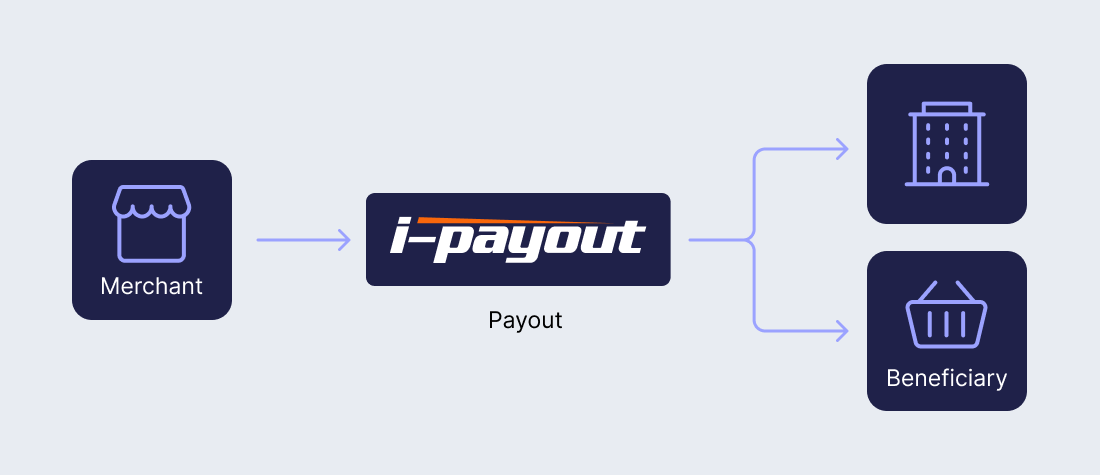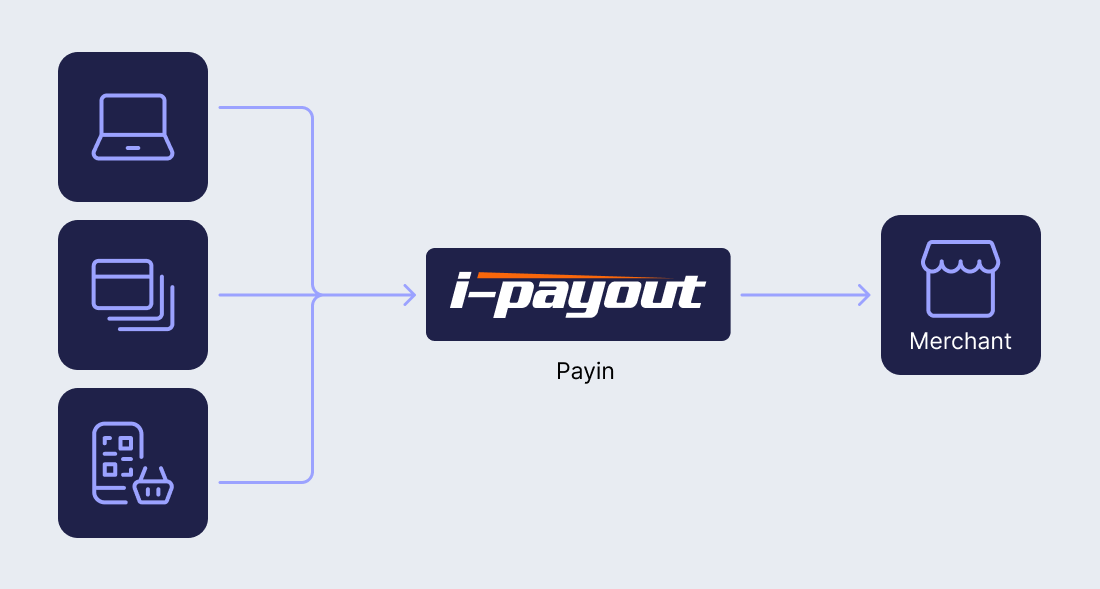i-payout Concepts
To use i-payout effectively, you need to understand some essential concepts. Here, you will find information about the following topics:
Environments
The API Portal offers two distinct environments to support your development and deployment processes:
- Sandbox Environment: The Sandbox Environment is a testing ground that mimics the production environment's functionality. It allows developers to experiment with API calls and validate their integrations without affecting live data or systems.
- Production Environment: The Production Environment is the live environment where your applications interact with real users and data. After thoroughly testing your integration in the sandbox, you can move to the production environment for live operations.
Each environment serves different stages of your API integration journey, allowing you to develop, test, and deploy your applications confidently and securely.
Moving to ProductionTo learn how you can move your integration to production, and how to use each environment, refer to the Environments page in the API Reference section.
Beneficiary
A beneficiary is an individual or entity using a payment service to send or receive money. This could be a person buying goods or services, a business paying suppliers, or any entity involved in financial transactions.
Payout
A payout is the process of sending funds from a merchant (such as a business or service provider) to a beneficiary's (such as an employee, contractor, supplier, or customer) eWallet. The beneficiary can log into their eWallet and transfer the funds to their preferred payment method. Businesses use payouts to pay various overseas recipients, including freelancers, contractors, vendors, and affiliates. This method is used in the hosted solution and batch file integration.

Transfer
A transfer is basically the same as a payout, a payment method in which the merchant can send funds to a beneficiary. However, it transfers the funds directly to the beneficiary's preferred method without going through the eWallet. This method is used in the full API integration and the embedded solution.
Receivable
i-payout receivables allow merchants to accept payments from external sources such as customers, clients, or other financial entities into their merchant accounts.

Use Cases for Receivables
- E-commerce Transactions: Customers paying for products or services purchased online.
- Subscription Services: Receiving recurring customer payments for subscription-based services.
- Bill Payments: Customers paying utility bills, rent, or other services.
- Deposits: Customers making deposits into accounts for future use, such as trading accounts or prepaid services.
Spendback
Spendbacks allow merchants to collect payments directly from the beneficiary's eWallet balance. Beneficiaries can use the payout or commission to purchase items or services from the merchant.
By understanding and implementing a spendback system, merchants can enhance customer engagement, loyalty, and satisfaction while gaining valuable insights from customer participation. The process involves earning, accumulating, and seamlessly using credits during future transactions.
Webhook
A webhook is a communication method that enables real-time notifications and updates about financial events between different systems. It acts as a "push" mechanism, where an application automatically sends data to another application when a specific event occurs, eliminating the need for the receiving application to repeatedly request information.
What's next?
Learn about the different types of integration available for i-payout and the most common scenarios in which they are used in our Select the Right Integration for You guide.
Updated 3 months ago